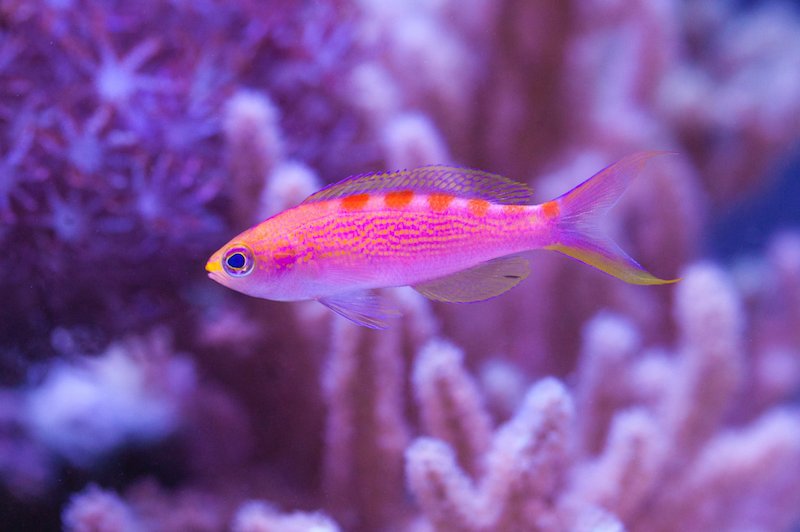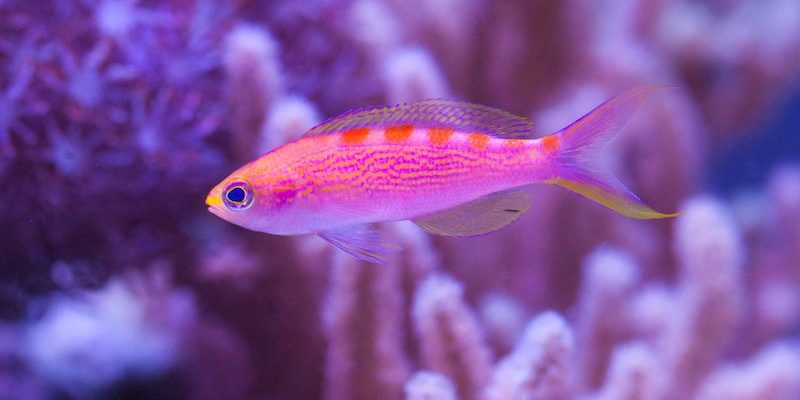
Acclimating a new anthias can sometimes feel tricky, especially if you’re new to the hobby. Just like moving to a new city, fish need time to adjust to their new environment. In this guide, we’ll walk through the process of acclimating your new anthias so they can settle in smoothly, feel safe, and thrive alongside your other aquatic residents.
Why Acclimation is Important
You might be wondering why you need to acclimate your new anthias at all. Fish, like people, have their own comfort levels and can get stressed if thrown into a situation that’s too overwhelming. When you bring your anthias home from the store, they’ve been in a different water environment—sometimes significantly different in temperature, salinity, and pH.
If you just drop them into your aquarium, it’s like tossing someone into a freezing pool before they’ve had a chance to dip their toes in first. The sudden change can shock their systems, leading to stress, illness, or even death. So, taking time to acclimate your fish helps them adjust gradually and keeps them healthy.
Generally, there are two main methods of acclimation: the drip method and the floating method. We’ll dive into these techniques in more detail in the next sections.
Preparing Your Aquarium for New Anthias
Before you even think about introducing your new fish, it’s essential to make sure your aquarium is ready. If your tank isn’t set up properly, it could create stress for both the new anthias and your existing fish. Here’s what to check:
1. Water Parameters: Make sure your tank’s pH, salinity, and temperature are within the proper range for anthias. They typically prefer a temperature of 75–80°F and a pH of 7.8 to 8.5.
2. Tank Condition: Ensure the tank is clean and that your filtration system is working correctly. Good water quality is a must for all fish. You don’t want your new anthias to swim around in a dirty environment.
3. Hiding Spots: Anthias can be a little shy, especially when first introduced. Adding plenty of hiding spots using rocks, plants, or decorations can help them feel more secure as they adapt to their new home.
By having everything set up beforehand, you’ll create a welcoming space for your anthias and make the acclimation process smoother.
The Drip Method: A Slow Introduction
The drip method is one of the most recommended ways to acclimate new fish, and for good reason. It mimics gradual changes in their environment, slowly allowing them to adjust to the water parameters in your aquarium. Here’s how to do it:
1. Gather Supplies: You’ll need a clean bucket or container, some tubing (if you’ve got it), and a timer. Alternatively, you can also use a small cup to transfer water if you don’t have tubing.
2. Start Dripping: Place your new anthias and the water from their bag into your bucket. Then, using tubing, create a siphon system to slowly drip aquarium water into the bucket. Aim for about 2-4 drops per second.
3. Timing: Let them sit in the bucket for at least 1-2 hours, or until the water volume doubles. This gives the anthias time to adjust to the changing water chemistry.
By the end of this method, your anthias will feel more at home in your aquarium water, making the transition much smoother.
The Floating Method: Another Option
If the drip method feels a bit involved or you’re short on time, the floating method is a simpler alternative. It’s like letting your fish warm up by floating in the sun on a lazy day. Here’s how it works:
1. Float the Bag: When you bring your anthias home, simply float the sealed bag in your aquarium for about 15-20 minutes. This allows the temperature in the bag to equalize with the tank water.
2. Add Tank Water: After that, open the bag and gradually add a small amount of your aquarium water to the bag—about a quarter cup at a time—every 5 minutes or so. After you’ve added a few cups and waited about 30 minutes total, it’s time to release the fish.
3. Release Gently: Instead of dumping the fish into the aquarium, use a net to gently place them in their new home. This helps avoid introducing any excess store water into your tank.
The floating method is a bit faster but doesn’t allow for the same gradual changes as the drip method. So, if you’re working with particularly sensitive anthias, take your time with the drip method instead.
Watching for Stress Signals
Once you’ve successfully acclimated your new anthias, keep an eye on them for signs of stress. Fish can’t tell you when they’re feeling off, but they do communicate through their behavior. Here’s what to look for:
– Hiding: While it’s normal for anthias to hide a bit at first, prolonged hiding could indicate stress. If they’re not coming out after a few days, this might be a concern.
– Erratic Swimming: If you see them zooming around the tank wildly or scratching against objects, they might not be adjusting well.
– Loss of Appetite: It’s common for new fish to be shy and not eat right away, but if they refuse food for more than a couple of days, something might be wrong.
Being vigilant early on can set your anthias up for a successful and healthy life in your aquarium.
Maintaining Optimal Conditions Post-Acclimation
After acclimating your new anthias, it’s essential to continue providing the best environment possible. Here are a few tips to keep everything running smoothly:
– Regular Water Changes: Keep up with regular water changes to maintain water quality. Ideally, aim for changing 10-20% of the water weekly.
– Monitor Water Parameters: Continue testing the water in your tank regularly. This ensures that the pH, salinity, and temperature remain stable.
– Feeding Properly: Feed your anthias a varied diet that includes high-quality flakes, frozen foods, and live food when possible. Varied diets promote better health and color.
By ensuring that your tank remains a stable and healthy environment, you can help encourage your anthias to thrive for years to come.
Acclimating a new anthias to your aquarium doesn’t have to be daunting! Think of it as giving your fish the best welcome party possible. By taking your time and following the right steps—whether using the drip method or floating method—you can set them up for success.
Remember, the goal is to minimize stress and create a smooth transition for your new little buddy. With careful attention and proper care, your anthias will soon swim happily in their new home, adding color and excitement to your aquarium. So, gather your supplies, roll up your sleeves, and get ready to welcome your new fish friend!

